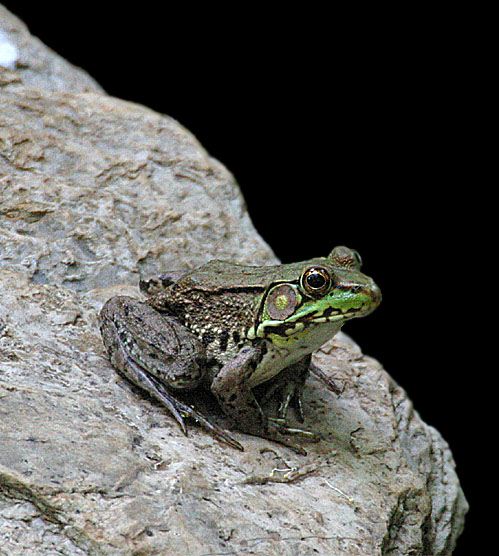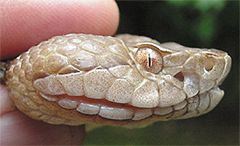|
|
|||
(Updated 07/04/10) |
|
|
|||
(Updated 07/04/10) |
|
All Web site photos, maps, charts & text © Hilton Pond Center Crab Spider consuming a Hoverfly (AKA Flowerfly) on a The Web sites for Hilton Pond Center for Piedmont Natural History and Operation RubyThroat: The Hummingbird Project were designed and are maintained by executive director Bill Hilton Jr. The sites are housed on Comporium servers in Rock Hill, South Carolina USA as an in-kind gift to the Center. Some hardware and software products mentioned below were donated to the Center in support of our work.
Prior to the fall of 2002, on-line photos were taken with an Apple QuickTake 150 and then a Sony Mavica FD83 digital camera at "standard" resolution; for the latter, the macro setting was used for close-ups with an initial image size of 1216 x 912 pixels.
All Web site photos, maps, charts & text © Hilton Pond Center Albino hatch-year female Ruby-throated Hummingbird (above) Most close-ups are taken with Canon's 60mm f2.8 macro. Hand-held photos of birds bigger than hummingbirds and warblers are taken with the Canon 50mm compact macro (with or without the optional 1:1 adapter); our arms are too short to get bigger birds in the frame when we use the 60mm! For some close-ups we may use a Canon 180mm f/3.5L macro or, more often, the lighter-weight Canon 100mm f/2.8 macro--particularly for butterfly and other insect photos. With the 100mm macro we sometimes attach Canon's EF12mm II or EF25mm II extension tubes to allow closer focusing. The Canon 28-135mm f/3.5-5.6 internal stabilization zoom serves as a multipurpose lens, especially on walk-abouts. Distant shots employ the 100-400IS f/4.5-5.6L telephoto zoom (occasionally with 1.4X or 2X extender). A Canon 16-35mm f/2.8L wide angle zoom is used for certain landscape shots. Most photos are taken when we serendipitously come across an interesting organism or object as we walk the trails around Hilton Pond.
A Really Right Stuff L-plate (below left) securely mounts the camera to the ballhead and allows quick change from horizontal to vertical perspective. On close-ups, a gear-driven Novoflex Focusing Rail enables for a shift in camera position in two axes (right/left and forward/back) without moving the tripod. For desktop work--and some ground-level work in the field-- Away from Hilton Pond Center we download photos from a Lexar Professional 4GB 133x CompactFlash card to a 160GB Mercury On-The-Go Firewire/USB combo portable hard drive via a Lexar Firewire card reader attached to a Mac PowerBook G4. We back up photo files onto various hard drives and also to DVDs and maintain duplicates using the Time Machine component of Mac OS X. A few of our Web site images are from 35mm slides taken 1975 through 1999 with +1, +2, +3, and/or +10 close-up lenses attached to a 50mm lens on a Nikkormat EL or, much less commonly, All Web images are cropped and reduced to 72 dpi resolution in Photoshop and most are compressed with freePhotoConverter 3. Some images are color-adjusted with Intellihance Pro 4.2 or fine-tuned for sharpness and "grain" with FixerLab's FocusFixer and NoiseFixer. The Hilton Pond Center logo was designed using Strider Software's TypeStyler. 
All Web site photos, maps, charts & text © Hilton Pond Center Green Frog Uploading of the site is accomplished by Fetch, a user-friendly Finder-like FTP client for the Macintosh. Images are imported and catalogued using Apple's iPhoto. The comprehensive on-site search engines for both Web sites are provided courtesy of LookSmart; we use Amazing Counters to tally page hits. Links to most software developers or manufacturers who have donated currently used applications or equipment to Hilton Pond Center can be found on the Supporters page.  Our goal is to assure that the Hilton Pond Center Web site and its images download quickly and are easily navigable; thus, you will not find a lot of "bells and whistles" in the form of sounds or animation. All individual pages are set at 635 pixels in width to be printable on standard 8.5" x 11" paper; this format also makes the pages easily readible using Apple's iPhone. The font of preference is Comic Sans MS. If you have problems with viewing any images or pages or have technical questions about the site, please contact the WEBMASTER. (Photo above left is a Northern Copperhead.) Our goal is to assure that the Hilton Pond Center Web site and its images download quickly and are easily navigable; thus, you will not find a lot of "bells and whistles" in the form of sounds or animation. All individual pages are set at 635 pixels in width to be printable on standard 8.5" x 11" paper; this format also makes the pages easily readible using Apple's iPhone. The font of preference is Comic Sans MS. If you have problems with viewing any images or pages or have technical questions about the site, please contact the WEBMASTER. (Photo above left is a Northern Copperhead.)
Pinxter-flower, A Wild Azalea Contents of the Hilton Pond Center website--including text, photos, maps, charts and other graphics--may NOT be duplicated, modified, or used in ANY way except with the express written permission of Hilton Pond Center. In general, to maintain control over our images we do not allow them to be posted on other Web sites, but we can make them available for fee-based one-time use in print publications. All rights reserved worldwide.
All Web site photos, maps, charts & text © Hilton Pond Center Ventral View of a Lightningbug |
| Up to Top of Page
Back to Miscellany |
|
Make direct donations on-line via
Network for Good: |
|
|
Use your PayPal account
to make direct donations: |
|
|
If you like shopping on-line please become a member of iGive, through which 800+ on-line stores from Amazon to Lands' End and even iTunes donate a percentage of your purchase price to support Hilton Pond Center .
 Every new member who registers with iGive and makes a purchase earns an ADDITIONAL $5 for the Center. You can even do Web searches through iGive and earn a penny per search--sometimes TWO--for the cause! Please enroll by going to the iGive Web site. It's a painless, important way for YOU to support our on-going work in conservation, education, and research. Add the iGive Toolbar to your browser and register Operation RubyThroat as your preferred charity to make it even easier to help Hilton Pond Center when you shop. Every new member who registers with iGive and makes a purchase earns an ADDITIONAL $5 for the Center. You can even do Web searches through iGive and earn a penny per search--sometimes TWO--for the cause! Please enroll by going to the iGive Web site. It's a painless, important way for YOU to support our on-going work in conservation, education, and research. Add the iGive Toolbar to your browser and register Operation RubyThroat as your preferred charity to make it even easier to help Hilton Pond Center when you shop. |
|
 post questions for The Piedmont Naturalist |
Join the |
Search Engine for |
|
|